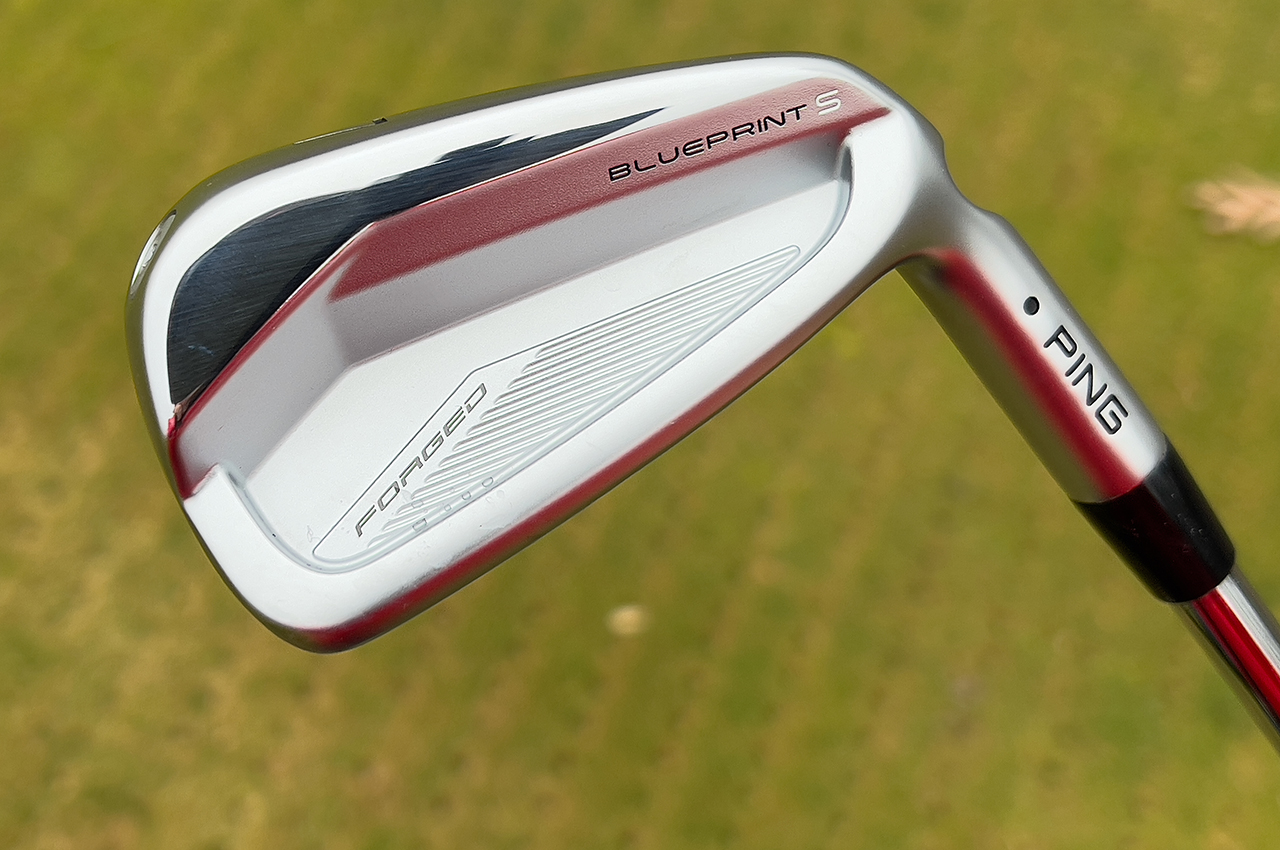Gear: Blueprint S irons
Price: $230 each with True Temper Dynamic Gold S300 steel shafts and Golf Pride Tour Velvet grips, $245 each with Ping Alta CB Black graphite shafts
Specs: Forged 8620 carbon steel with a high-density toe screw and Hyrdopearl 2.0 finish. Available 3-iron through pitching wedge.
Available: Jan. 9
Who They’re For: Accomplished golfers who want a better-player’s distance iron with extra forgiveness in the long irons.
The Skinny: A new forging process gives the Blueprint S enhanced performance and feel in the long irons without making them too big, while the short irons in this better-player’s distance set deliver control and precision.
The Deep Dive: The better-player distance category has been one of the hottest parts of the golf industry for the last few years, with more and more brands offering distancing-enhancing clubs that look like muscleback blades. In 2021, Ping released the i59, a club with a clean look, a thin topline and a touch of offset but that hides an internal aluminum piece (AlumiCore) that creates more perimeter weighting and stability.
The i59 is being replaced in 2024 by the new Blueprint S iron, a club that resembles the forged muscleback blades that most tour players love. And once again, Ping is hiding some features that make the Blueprint S more playable.
Shop new Ping Blueprint S irons

The Blueprint S has minimal offset and a thin topline to create a look in the address position that low-handicap players should like. (David Dusek/Golfweek)
The new Blueprint S has a topline that is a few millimeters wider than the i59, and there is a little more offset, too. The Blueprint S is forged from a piece of 8620 carbon steel, but what sets it apart is how it is forged compared to other forged irons.
The hitting area of every other forged iron is flat once the forging process begins and the hot steel is pressed into shape. But in the Blueprint S 3-iron, 4-iron and 5-iron, the first rough forging and second strike bend the head so the top portion of the club angles downward, spreading the back of the club. Then the metal is reoriented (tipped) to allow a small pocket to be milled into the back of the head. The pocket is like a pilot hole you might use when screwing something into a wall. The next strike utilizes the milled pocket and creates a pocket in the back of the head. Finally, with the pocket in place, a final two strikes of the hot metal flatten the hitting area again.

Ping uses a special, seven-step forging process to create a pocket in the back of the Blueprint S. (Ping)
Previously, a construction like this was only possible in a cast club because you cannot create an angled cavity in the back of an iron head if the press comes straight down on top of the billet.
Ping believes this seven-step forging process can uniquely deliver the feel low-handicap players demand while removing 10 grams of steel (weight) and replacing it with a piece of vibration-absorbing thermoplastic polyurethane (TPU) that is capped with stainless steel. It also helped Ping designers lower the center of gravity and make it easier to hit the Blueprint S long irons on a higher trajectory.
The 6-iron through pitching wedge are traditionally forged and do not have the TPU insert in the long irons. The mid-irons and scoring clubs also have blade lengths that are progressively shorter.
Shop new Ping Blueprint S irons

A small weight screw in the toe pulls the center of gravity into the middle of the hitting area. (David Dusek/Golfweek)
For several years, Ping has added weight screws in the toe and tip weights in the heel of irons to boost the moment of inertia and increase stability. The Blueprint S has these features, plus an updated steel shaft hosel stick. The stick weight is molded in a cap that goes up from the hosel and into the tip of a steel shaft. It ranges from 1 to 10 grams. Ping now also has a molded sleeve ranging from 1 to 5 grams designed to accommodate graphite shafts with a much smaller hollow area in the center.
Compared to Ping’s new Blueprint T, the Blueprint S is slightly larger and has more perimeter weighting, and will be more forgiving. The Blueprint S will also launch the ball higher, but it still creates a lower launch than the i230, which has the highest launch angle in Ping’s better-player iron lineup.
Finally, to make it easier for players and fitters to create blended sets that include Blueprint S and the new Blueprint T irons, Ping matched all the lofts of its better-player irons (including the i230). The flight and feel varies subtly from club to club, but now it should be easier to create consistent distance gaps between different types of irons.
Shop new Ping Blueprint S irons
Below are several images of the Ping Blueprint S irons:

Share this

Share this

Share this

Share this

Share this

Share this

Share this

